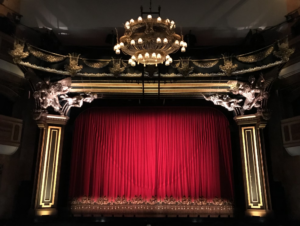In the world of entertainment, there exists a breed of performers who defy traditional boundaries, seamlessly blending acting, singing, and dancing into a captivating symphony of artistic expression. These individuals, often referred to as triple threat artists, possess a unique ability to engage audiences on multiple levels. In this exploration, we delve into the significance of dance within the realm of triple threat artistry, uncovering the intricate ways in which it contributes to the vibrancy and allure of performances.

The Evolution of Triple Threat Artistry:
To comprehend the contemporary significance of triple threat artistry, we must journey back through the annals of entertainment history. Traditionally, performers were categorized into actors, singers, and dancers, each occupying distinct niches. However, the evolution of musical theater and cinema prompted a paradigm shift, giving rise to a new breed of artists who could seamlessly navigate the demands of all three disciplines.

The triple threat artist emerged from the golden age of Hollywood musicals, dominated by Gene Kelly and Judy Garland. Performance expectations changed as the entertainment industry changed, resulting in a fusion of skills that crossed boundaries.
Dance as a Language of Emotion
At the heart of triple threat artistry lies the profound ability to convey emotion, and dance serves as a potent language in this expressive endeavor. Whether through the graceful pirouettes of ballet or the rhythmic movements of jazz, dancers communicate narratives that transcend verbal articulation.

Dance possesses the unique power to amplify the emotional resonance of a performance. The subtleties of body language, the nuanced expressions conveyed through movement, enrich the storytelling experience, allowing performers to connect with audiences on a visceral level. In this sense, dance becomes a vehicle for emotional translation, elevating the impact of a performance.
Versatility
The true essence of a triple threat artist lies in their ability to seamlessly transition between genres and styles. Dance, as a versatile and adaptable form of expression, plays a pivotal role in this chameleon-like versatility. From the graceful waltzes of classical ballet to the energetic beats of hip-hop, a dancer’s proficiency in diverse styles enhances their artistic range.

Multiple dance forms in one performance demonstrate the artist’s technical skill and add depth to the story. This adaptability lets triple threat artists play a variety of roles, expanding their repertoire and keeping them relevant in an ever-changing industry.
Complete Storytelling
In the realm of musical theater, the integration of dance with music and lyrics creates a symphony of storytelling. Each pirouette, each twirl, becomes a visual manifestation of the melodies and harmonies that accompany it. The synchronization of movement with vocal and instrumental elements enhances the narrative, transforming it into a sensory feast for the audience.

The visual appeal of dance adds a layer of spectacle to performances, captivating audiences with a kaleidoscope of movement. This marriage of visual and auditory stimuli creates a holistic and immersive experience, where the story is not only heard but felt through the kinetic language of dance.
Physical Fitness and Stamina
Beyond its artistic merits, dance demands a rigorous physicality that transforms performers into artistic athletes. The discipline required to master intricate choreography contributes to a triple threat artist’s overall fitness and stamina. Endurance, a prerequisite for sustained and energetic performances, is cultivated through countless hours of practice and dedication.

The physicality of dance instills a sense of discipline and commitment, qualities that extend beyond the rehearsal studio. The rigors of training become a metaphor for the dedication required to excel in the competitive world of entertainment. Thus, dance not only refines the body but also forges the mental fortitude necessary for a successful career in the limelight.
Marketability and Industry Demand
In a fiercely competitive industry, the demand for performers with a diverse skill set is ever-growing. Artists with the triple threat advantage—acting, singing, and dancing—are sought after in the entertainment sector.

The marketability of triple threat artists is amplified by their ability to attract a broader audience. With dance serving as a universal language, these performers transcend cultural and linguistic barriers, appealing to diverse demographics. Triple threat performers are essential in an audience-driven profession because producers and directors value their entire and engaging offering.
Conclusion
Dance connects acting, singing, and movement in triple threat creativity. This comprehensive approach to performing has raised entertainment standards and resonated with audiences globally. We promote triple threat talent and the harmonic marriage of multiple abilities, recognizing dance as a key to engaging and immersive presentations.


